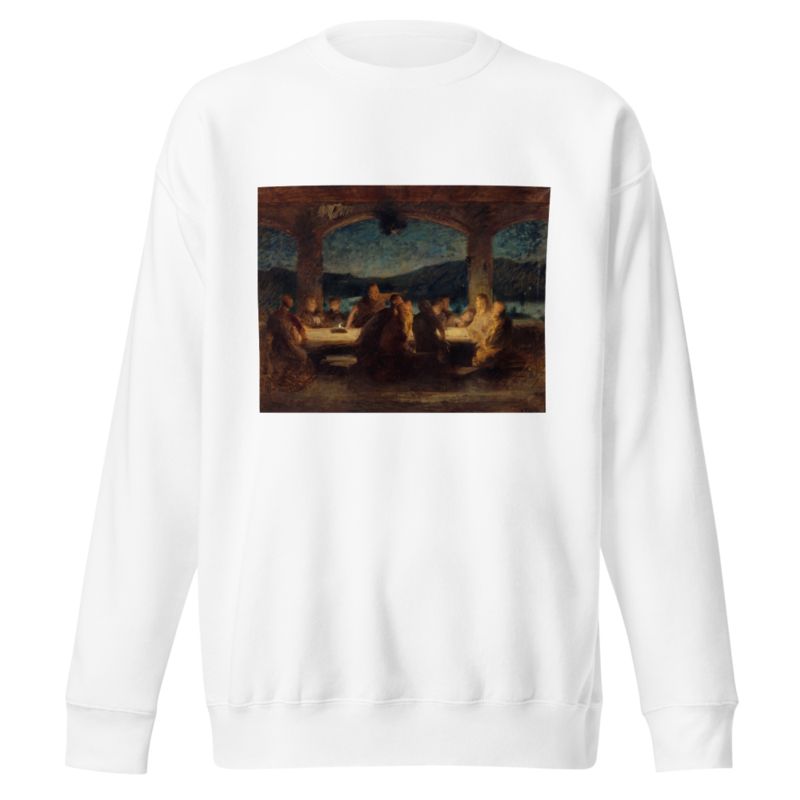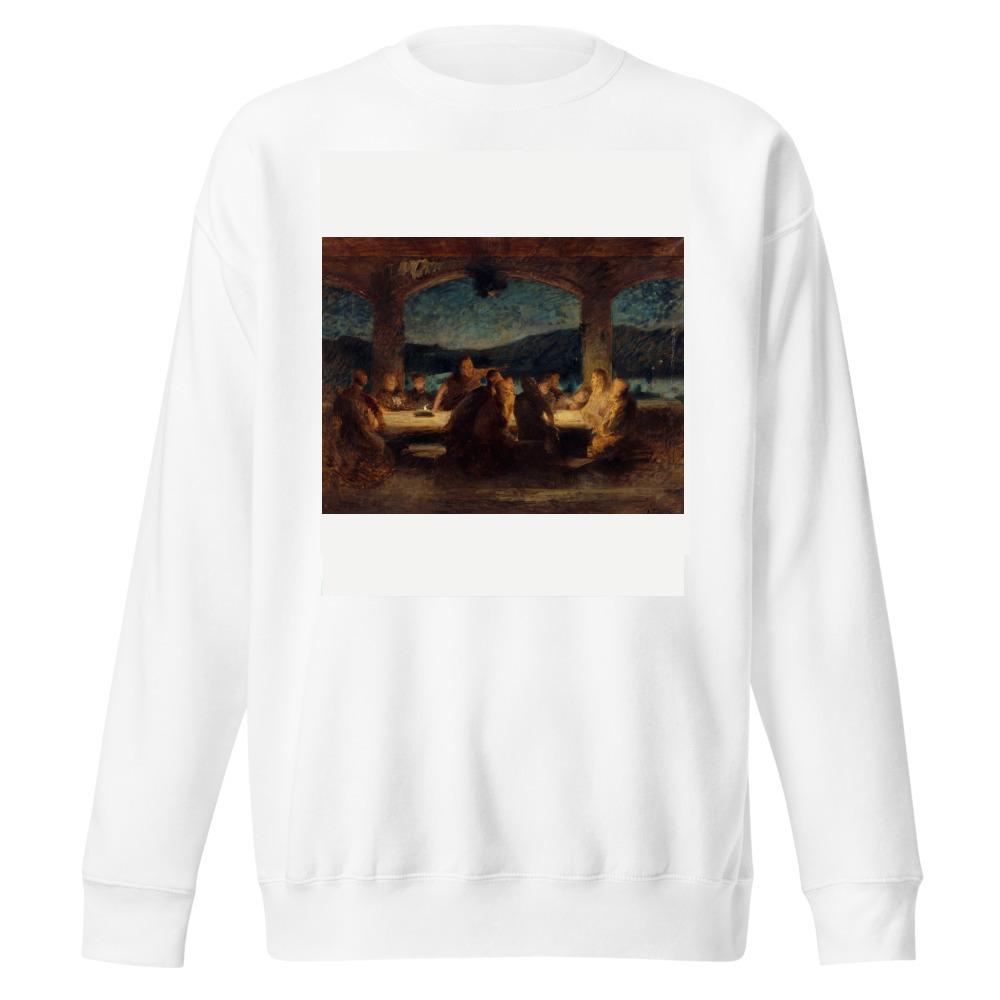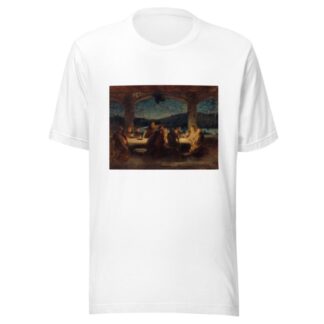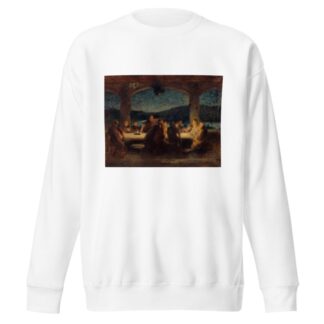Description
La Cène by Alexandre Falguière printed on a Sweatshirt
About the Sweatshirt
Regular fit
Standard length, the fabric easily gives into movement
Comfortable
The fabric and fit of this item are extra comfy
Tear-away tag
Easily removable tear-away tag that allows you to add a custom inside label
This Unisex Premium Sweatshirt has a classic crew neck, flattering unisex fit, and soft 100% cotton exterior.
- 100% cotton face
- 65% cotton, 35% polyester
- Charcoal Heather is 55% cotton, 45% polyester
- Fabric weight: 8.5 oz./yd.² (288.2 g/m²)
- Tightly knit 3-end fleece
- Side-seamed construction
- Self-fabric patch on the back
- Double-needle stitched rib collar, cuffs, and hem
- Tear-away label
Alexandre Falguière (1831 – 1900)
Jean Alexandre Joseph Falguière was a French sculptor and painter.
Falguière was born in Toulouse. A pupil of the École des Beaux-Arts, he won the Prix de Rome in 1859; he was awarded the medal of honor at the Paris Salon in 1868 and was appointed Officer of the Legion of Honor in 1878.
Falguière’s first bronze statue of importance was Le Vainqueur au Combat de Coqs (Victor of the Cockfight) (1864), and Tarcisius the Christian Boy-Martyr followed in 1867; both were exhibited in the Luxembourg Museum and are now in the Musée d’Orsay. His more important monuments are those to Admiral Courbet (1890) at Abbeville and the famous Joan of Arc. Other works include Eve (1880), Diana (1882 and 1891), Woman and Peacock (a. k. a. Juno and The Peacock), and The Poet, astride his Pegasus spreading wings for flight. He sculpted The Dancer, based on Cléo de Mérode which today is also in the Musée d’Orsay. In 1870 he helped create the snow sculpture, La statue de la Résistance.
To these works should be added his monuments to Cardinal Lavigerie and to Marquis de Lafayette (in Washington, DC), and his statues of Alphonse de Lamartine (1876) and St Vincent de Paul (1879), as well as the Honoré de Balzac, which he executed for the Société des gens de lettres on their rejection of that by Auguste Rodin; and the busts of Carolus-Duran and Ernest Alexandre Honoré Coquelin (1896).
Falguière was a painter as well as a sculptor. His Wrestlers (1875) and Fan and Dagger (1882; a defiant Spanish woman) were in the Luxembourg, and other pictures of importance are The Beheading of St John the Baptist (1877), The Sphinx (1883), Acis and Galatea (1885), Old Woman and Child (1886) and In the Bull Slaughter-House.
Falguière also taught; among his students were Francis Edwin Elwell, Ernest Henri Dubois, Julien Caussé, Laurent Marqueste, Henri Crenier and Théophile Barrau.
Falguière became a member of the Institut de France (Académie des Beaux-Arts) in 1882.
Falguière died in Paris in 1900 and was interred there in the Père Lachaise Cemetery, where his monument is by his pupil Marqueste.






Reviews
There are no reviews yet.